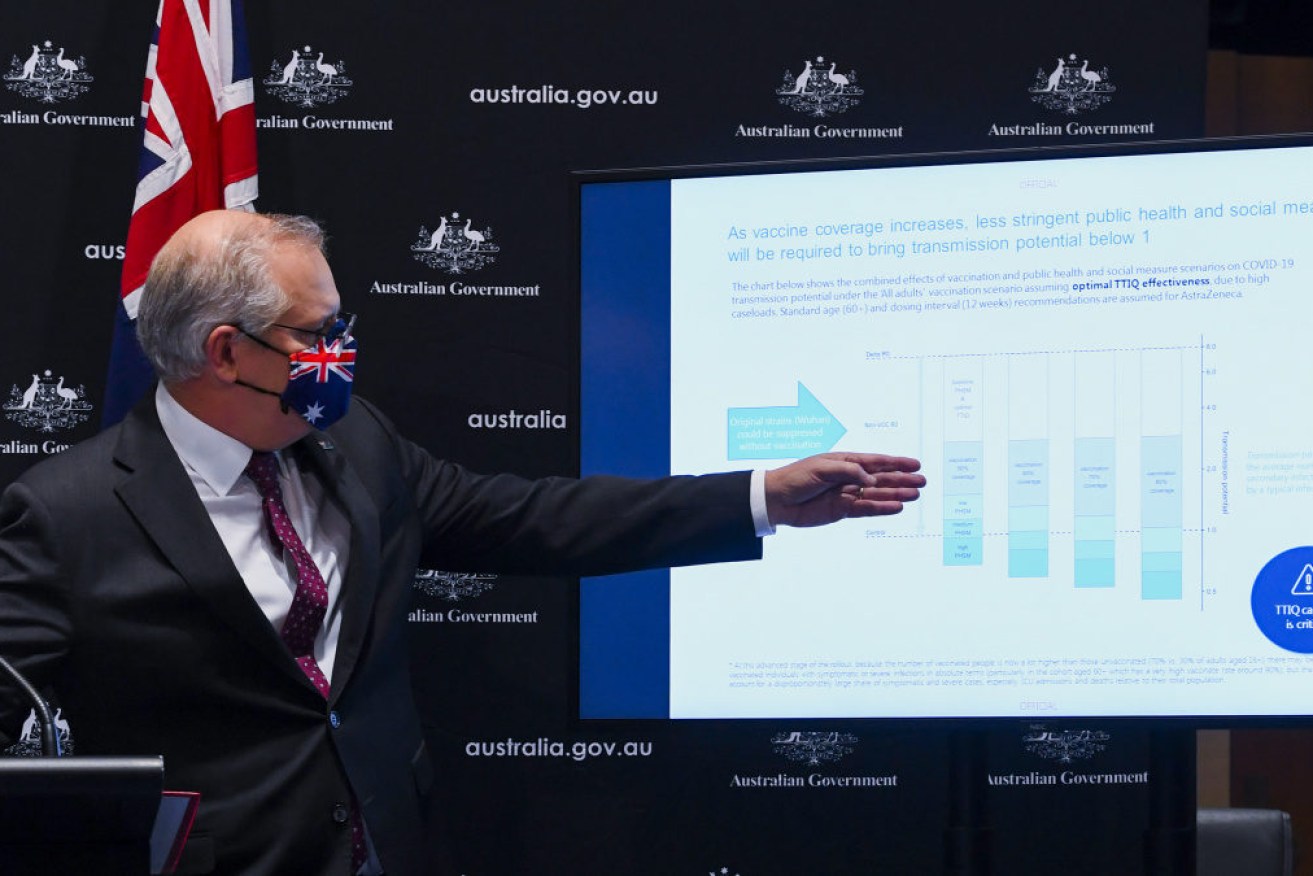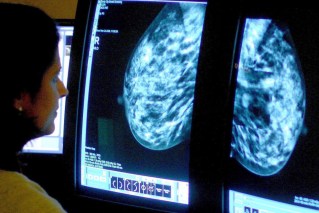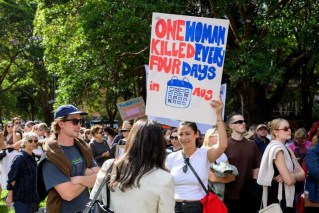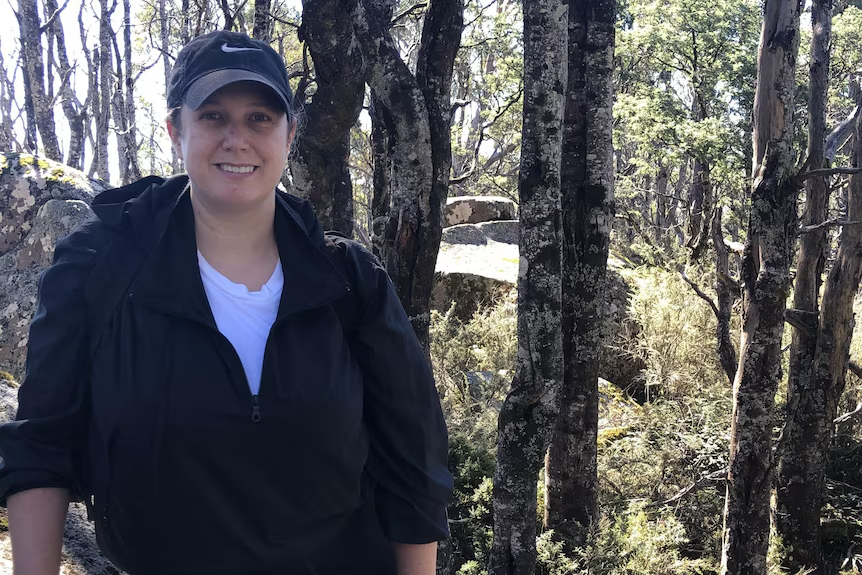Some COVID rules to remain indefinitely, amid warning ‘there will be deaths’ on reopening


The Doherty Institute's modelling has been the flashpoint for the latest interstate COVID stoush. Photo: AAP
Australians must prepare for “low-level” COVID rules to remain in place even after most of the country is fully vaccinated, the Prime Minister has warned.
This includes getting used to living with capacity limits at bars and sporting events.
World-leading scientific modelling from the Doherty Institute revealed Scott Morrison’s ‘four-phase’ plan for reopening will be a delicate balancing act, winding back travel and quarantine rules while maintaining “low-level” restrictions until more than 80 per cent of Australia is vaccinated.
But even then, Australia could see thousands of COVID cases and deaths in a serious outbreak.
“We are moving from managing and suppressing cases … our focus [will be] on managing hospitalisation, serious illness and, of course, fatalities,” Mr Morrison said in Canberra on Tuesday.
He used the Parliament House press conference to present the long-awaited modelling on vaccination targets from the Doherty Institute.
Its scientists said Australia can’t move safely to Phase B and C of the reopening plan until 70 and 80 per cent of the adult population had been vaccinated.

Graph: Doherty Institute
“At 70 per cent vaccination coverage, the number of strict lockdowns would be significantly reduced,” the Doherty modelling states.
Labor leader Anthony Albanese used Tuesday to launch his push for $300 cash incentives for people to get vaccinated, saying the government should be doing all it could to encourage jabs.
Plans to treat COVID ‘like the flu’
Mr Morrison said the Doherty modelling found that, once adult vaccination rates hit 80 per cent, “you are dealing with a scenario that is not unlike living with an infectious disease like the flu”.
He and his government have been gradually seeding the public with the idea that, eventually, COVID will be treated like any other virus, with less focus on raw case numbers.
But that won’t be for quite some time.
Instead, even as Australia gradually moves through the reopening plan, it will be against a backdrop of minor restrictions.
The Doherty Institute said the Delta variant’s increased transmissibility meant it was “not possible to constrain an outbreak” at a vaccination rate of 60 per cent or lower without heavy rules.
However, a Delta outbreak at 70 per cent vaccination was manageable – and even more so if Australia maintained its world-class test, trace, isolate and quarantine (TTQI) system, and retained some minor rules.
Keeping that balancing act between rules, vaccinations and tracing meant hospital capacity would not be overwhelmed.
Those baseline rules, which will remain until at least Phase D – beyond 80 per cent vaccination – could be modelled on the light restrictions New South Wales enjoyed during March.
That included public venues at a density limit of one person per two square metres, social distancing in retail and offices, and sporting crowds capped at 70 per cent.

The various underlying rules Doherty modelled. Table: Doherty Institute
Those underlying rules won’t be lifted until the final ‘post-vaccination’ phase, where Australia would look to “manage COVID-19 consistent with public health management of other infectious diseases”.
However, the modelling did not look beyond that Phase D timeframe, and did not make predictions for what would happen to cases and deaths once essentially all rules were removed.
The Doherty modelling said the increased transmissibility and infectiousness of the Delta strain meant lockdowns alone were no longer enough to restrict cases. Instead, high vaccination rates were also needed.
Mr Morrison said he wanted “to get Australia in a position where we are living with the virus”, saying “there will always be infectious diseases resulting in hospitalisation, and indeed death”.
Chief medical officer Professor Paul Kelly was even blunter.
He said high vaccination rates would be key in limiting serious illness and deaths, but that Australians did need to prepare for cases to rise once key restrictions ease.
“We need to move with that four-phase plan to a different phase. We need to accept there will be cases, we need to accept there will be hospitalisations, there will be ICU admissions, and there will be deaths,” Professor Kelly said.
The modelling didn’t set out a baseline level of deaths expected in a normal year.
But it did say in a large outbreak that lasted for 180 days, with Australia at 70 per cent vaccination, about 1900 people would be expected to die, while about 390,000 – or 1.3 per cent of the population – would be infected.
Although phases B, C and D bring gradually looser COVID rules, the Doherty Institute said that keeping even those “low-level restrictions and optimal TTIQ” would reduce those numbers by 100-fold; down to 16 deaths and 2700 infections.
Doherty noted this compared to a recent annual average of 642 deaths and 178,621 cases from influenza in Australia.
Young people ‘peak spreaders’

Graph: Doherty Institute
Doherty Institute Professor Jodie McVernon also warned young people were the new “peak spreaders” of COVID-19 in Australia, making the case for those aged 16 to 30 to be given priority for the jab.
Professor McVernon said the modelling was based on an assumption that the 30-to-39 age cohort would get vaccine access from August 31, and the 16-to-29 group from October 11.
Under such a scenario, as modelled, transmission potential would plummet through November. It would be the most efficient of the four models.
Senior government sources told TND there was potential for the age groups to get vaccine access on those dates, though no official announcement has been made.
Despite calls from other epidemiologists to include children in the roadmap, Doherty said extending jabs to those aged 12 to 15 “has minimal impact on transmission and clinical outcomes”.








